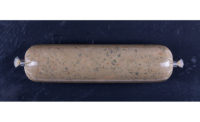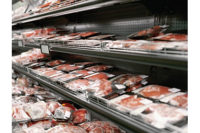"Data is just data if you don’t understand how to use it right,” says an executive of a small further processor.
Although the sentiment is true for mostly all facts and figures, his reference is to how in-line weighing technology — properly used — can be a compass of sorts, pointing in the direction of huge economic value. Usually, the data doesn’t mark that trail like a car’s GPS; instead, it suggests landmarks to look for.
Reduction in labor, fewer re-works and the ability to zero in on yield loss are areas where real savings can accrue as long as it is understood weight is more than just a number.
“Say we’re running our meatball line and see our turkey product weights are trending off,” says the executive. “Then we analyze that data and see what the dynamics are and look back to the different steps. Are you forming right? Are the scales right? Do we have an equipment problem? Is it a formulation problem? Is it the raw material? Is it a temperature problem?”
It’s just like a good detective following leads. Processors can spotlight and refine specific attributes of a product so it not only processes more efficiently, but is actually improved. Real-time decisions are made possible by real-time data.
Apparently, the key is keeping the abundance of available information as simple as possible to avoid paralysis through analysis. Simpler answers are usually better than more complex ones, according to the source.
“You take the low-hanging fruit,” he says. “The things you obviously look for are your give-away and then weight, plus or minus. If either of those things are out of line then it leads you to the next step in the process.”
This approach can depend also on the size of the operation and the assets available to study the data and fix the problem. There are software programs available from the original equipment manufacturers (OEMs) that trend weight and other numbers, but they don’t help processors dig into a problem with a specific product.
“You just have to simplify it to understand the different steps that may be causing issues and go from there,” the executive explains. There is also an opportunity for savings through in-line printing — it too can deliver real-time data that directly influence the efficiency of other areas vital in the process.
“As we print in-line, we read the product’s bar code and the information goes right into our inventory system,” he says. “We’re verifying the scan to make sure it’s readable so when it’s shipped, it scans accurately.”
This effort for continuous improvement pushes aside and replaces antiquated label systems because of the associated costs in materials, inventory and labor.
“I think the technology is actually pretty good right now,” the executive concludes. “My only real criticism is that the cost of the equipment should be brought down making it more economical for a small processor.”
Now, that’s not likely to happen, so processors must stay focused on the compass. You can’t get too far off course. NP





Report Abusive Comment